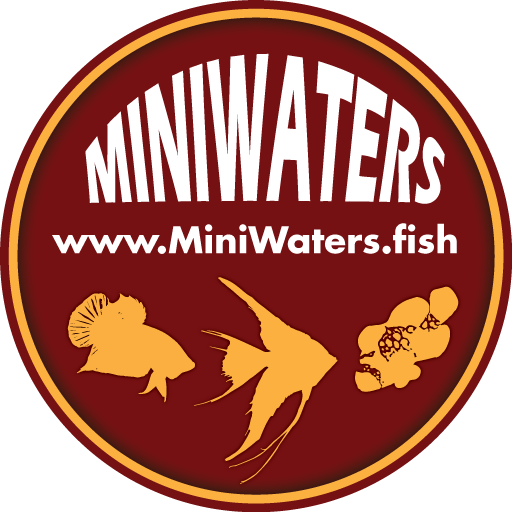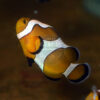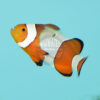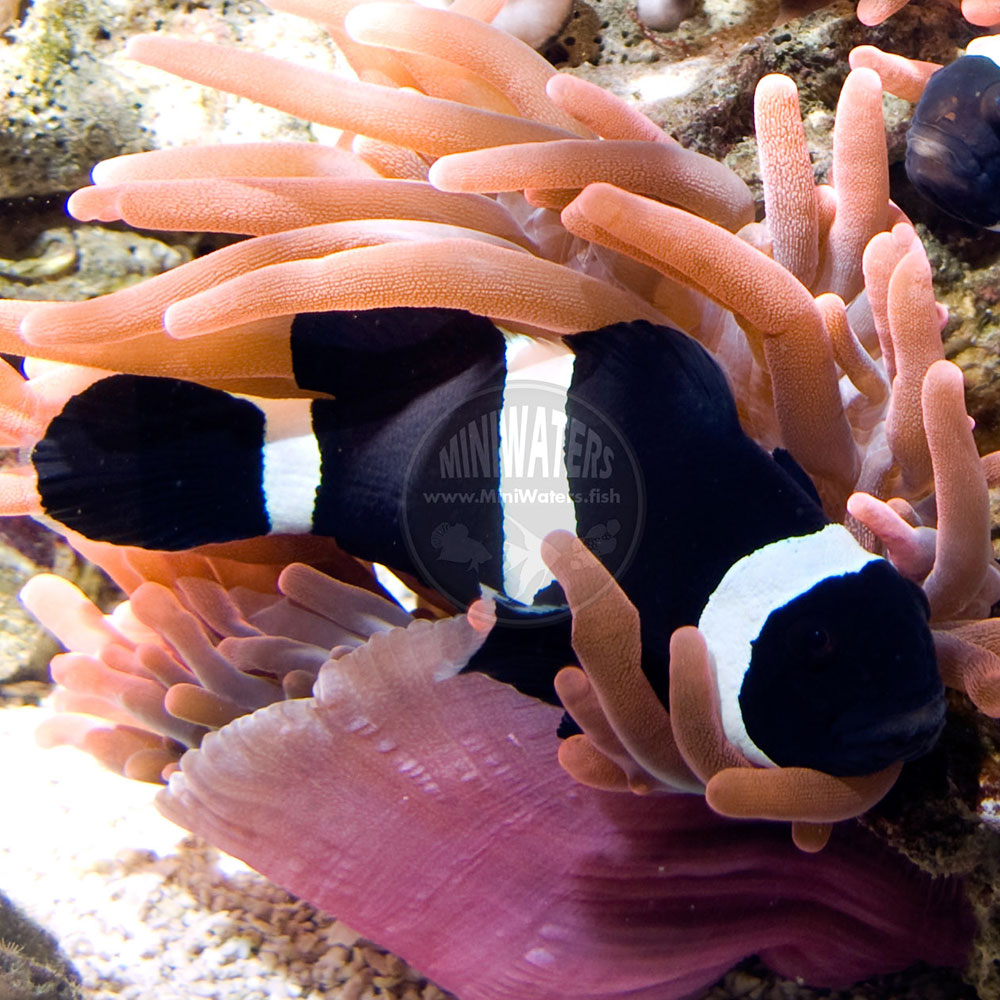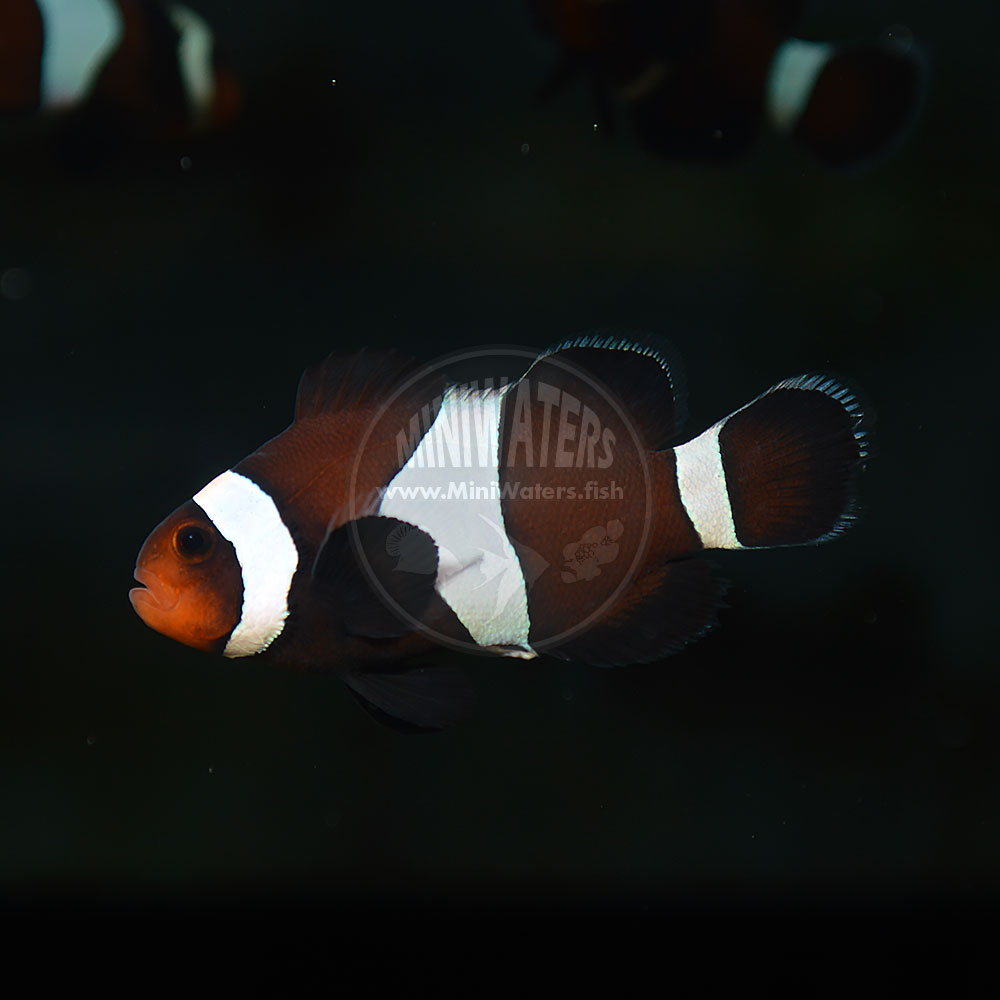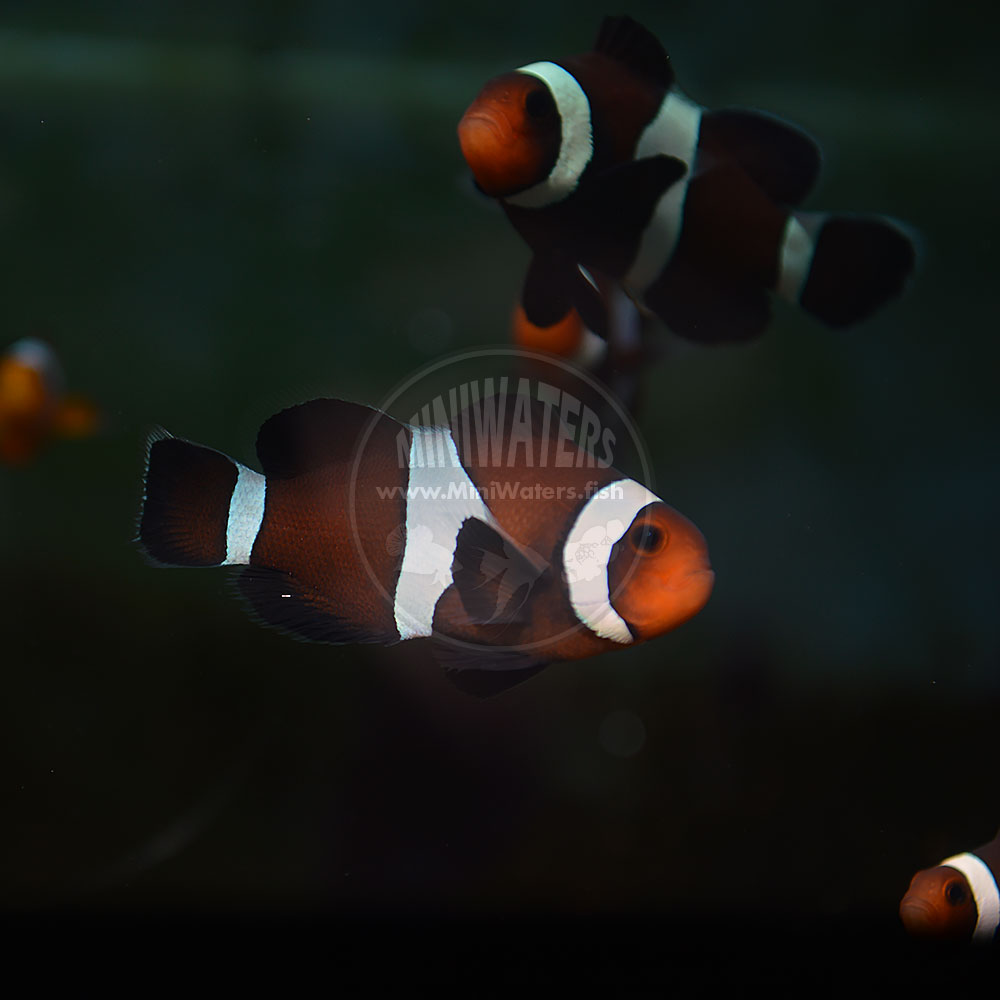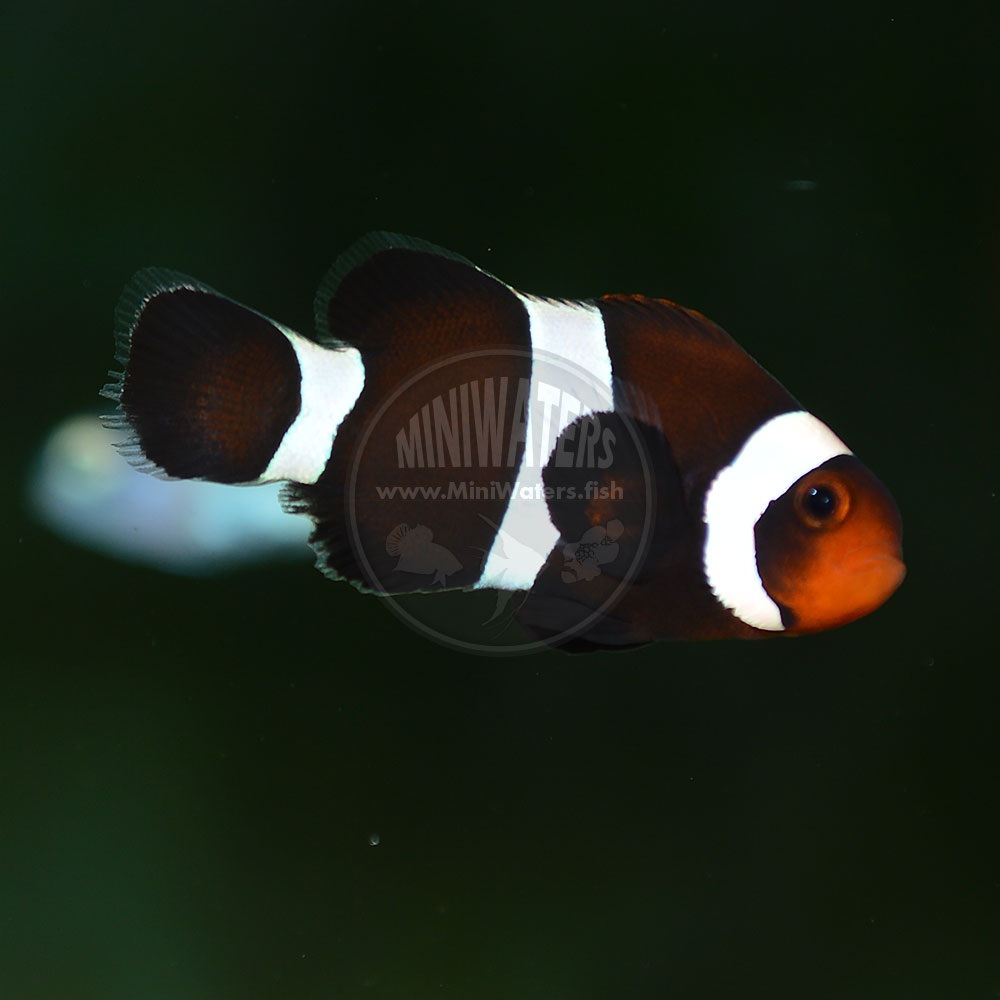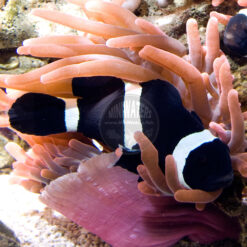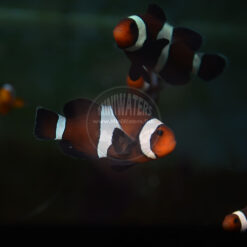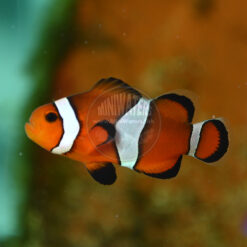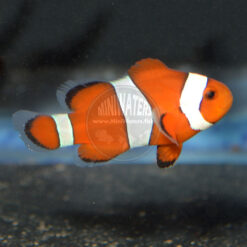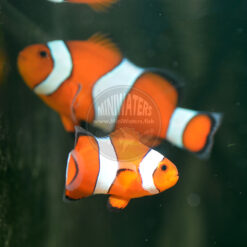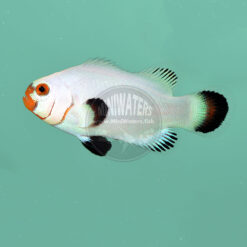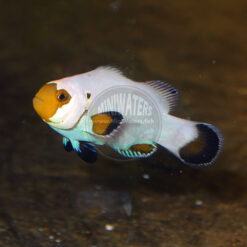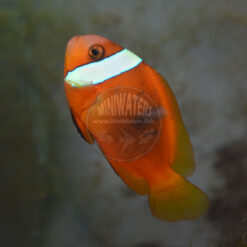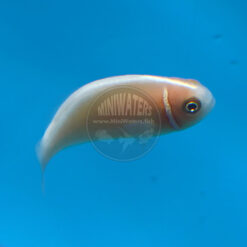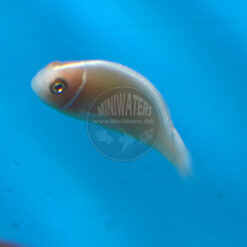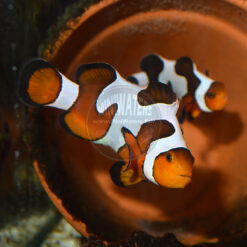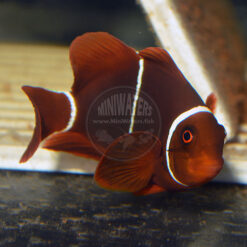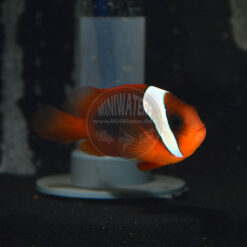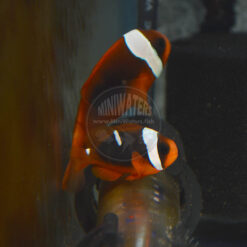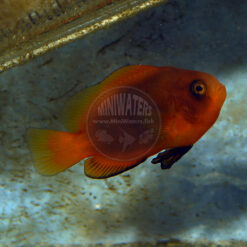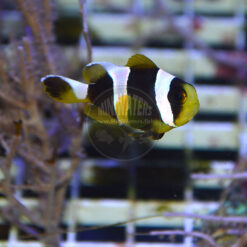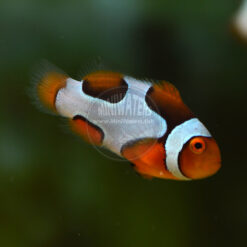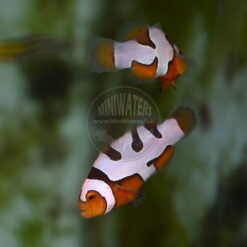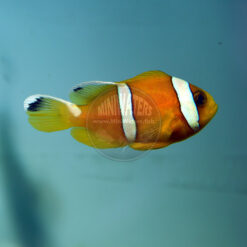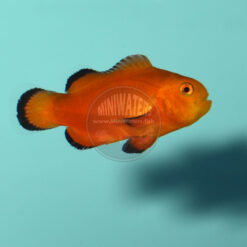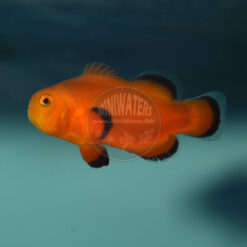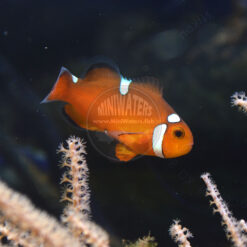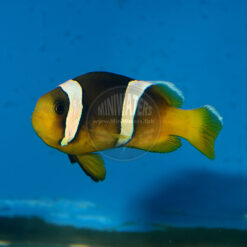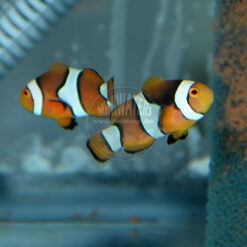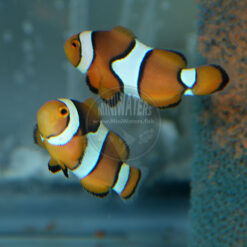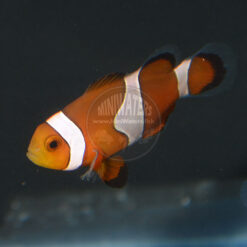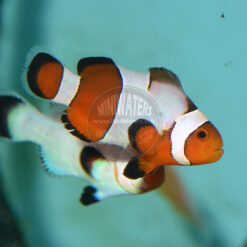Amphiprion sp. “Darwin Black” Clownfish; “True” Black Ocellaris, Captive Bred
$60.00 – $75.00
The Black Clownfish from Darwin Australia has been coveted for decades. We have know it in the trade as “Black Ocellaris”. Unfortunately, between taxonomic status and the pursuit of designer forms of Black Ocellaris (particularly the Black Snowflake), biogeographically and genetically pure representative of Darwin Black Clownfish are being marketed right alongside hybrid versions that may outwardly look the same. With wild fish unavailable for 10+ years, and now being unable to look at a fish and know it’s pure, the aggregate captive population of this “species” is now quite dubious.
This may not matter to the casual consumer of “Black Ocellaris Clownfish”, but if we value the role the aquarium hobby and breeders play in species stewardship, conservation and preservation, then simply buying any old “Black Ocellaris” is voting the wrong way with your money. The Darwin Black Clownfish I offer here represent fishes that offer a high degree of confidence in their genetic and biogeographic purity. Tracking these lines involves more work for commercial breeders, and more effort for small breeders to make available, so these fish do carry a higher cost. Yes, I know some will say I’m offering “pedigreed” fish…frankly, that may be more true that even I’d care to admit.
Whether you’re a breeder or simply like the idea of supporting efforts to encourage the preservation of biodiversity through our hobby, these are the best choice for a Black and White “ocellaris” type clownfish I can offer. Yes, they are at the upper end of what “Black Ocellaris” typically sell for…but then again, they’re really not “Black Ocellaris” at all!
Learn more about the plight of the Darwin Black Clownfish in the description below; you can also read more about this species in my CORAL Magazine online article.
Description
On Darwin Black Coloration
Juvenile Darwin Blacks appear darker almost from the time they settle out, but they are not necessarily solid black when sold (see gallery images). They can still exhibit bright orange coloration, particularly in the face / nose, as juveniles. Bright Light seems to encourage the formation of dark pigmentation, as does sexual maturity. It has been said that Darwin Blacks with orange noses at maturity are impure fish; it is difficult for me to say one way or another. That said, historically in my own experience, that orange nose should be gone by the time they are breeding. I cannot promise that with these fish, but as a professional “giving odds”, if there is any legitimacy to the claim, these fish would be the least at risk based on their lineage. Regardless of that, I would probably rotate out a Darwin Black which matured and spawned will still carrying a bright orange nose.
The Darwin Black “Ocellaris” Backstory
The Black Clownfish from Darwin Australia has been coveted for decades. We have know it in the trade as “Black Ocellaris”, and occasionally it has been mislabled as “Black Percula” or even “Onyx Percula”. AS breeders, we know the Darwin Black as a fish which at first glance seems like it could just be a black form of Amphiprion ocellaris. For the moment, that’s the taxonomic rank it’s been given.
But when you start working with it, well…the Darwin Black takes longer to mature, has smaller spawns, and is more prone to misbarring. And when you look at the biogeography of the fish, and consider the reports from divers in the area, you start to realize that perhaps the “Black Ocellaris” isn’t in fact simply a dark morph of the classic A. ocellaris.
Of course with the advent of designer clownfish breeding, the Darwin Black has been freely hybridized into A. percula (the primary, interspecific hybrid is called a Black Photon). However, the Darwin Black was also hybridized into the orange A. ocellaris, as early as 2004, and today we call these intraspecific hybrids “Mochas”. Mochas never gained much traction on their own, but when the Mocha hybrid was remade using an orange Ocellaris carrying the Snowflake Gene, suddenly Black Ice was born. This in itself still isn’t problematic as Mochas and Black Ice Clownfish are pretty discernible from their pure forms. However, subsequent generations of back crossing were instituted by multiple breeders all chasing one singular goal – A Black Snowflake Ocellaris.
The unfortunate truth is that breeding to create Black Snowflakes also creates normally-striped siblings. More than one breeder has openly admitted to selling these wild-type, Black fish simply as “Black Ocellaris”. And thus, without necessarily intending to do so, the breeding for Black Snowflakes (and their continued popularity) has unleashed a steady stream of hybridized “Black Ocellaris”…no longer representative of the true, genetically pure wild form found in Darwin Australia.
Now, this doesn’t matter to the person who simply wants a Black and White Ocellaris-style clownfish. But this is a huge problem for those of us who believe in the true conservation merits and power of what we do as marine fish keepers and breeders. Because these hybrids are sold into the market without any special demarcation, the entire captive gene pool is now suspect…you cannot KNOW you have a pure Darwin Black simply by virtue of its appearance.
When situations like this happened in the past to freshwater aquarists, responsible breeders turned back to WILD fish to establish new, pure lines of a species. And therein lies the snag – there hasn’t been a wild Darwin Black clownfish exported from Australia in probably 10+ years now. It’s possible that one here and there may have snuck in, but at this point, a “wild” fish coming in would have to come with some serious papers. I can say this with some certainty having talked to the collectors and exporters in Darwin directly.
Is all hope lost? Are all the “Black Ocellaris” in the aquarium hobby mutts? Well, as it turns out, not entirely, but we have to rethink things now.
There are still fish out there that we can trace back to wild, such is the case for the F2 Darwin Black “Ocellaris” Clownfish I am now able to offer from Sustainable Aquatics (SA). It is possible that in the future, I may also be able to offer likely F1’s
Sustainable Aquatics’ F2 Darwin Blacks
While SA reports that not all of their broodstock is traceable, they still maintain a pair of known F1 Darwin Black Ocellaris. This broodstock was reportedly obtained from Christian Hoffman, a clownfish breeder in Australia who was very active some 10 years back (I couldn’t say today). Given Hoffman’s location, and the timeframe, plus the reality that designer clownfishes basically “didn’t exist” back then, there is no reason to doubt that these original fish were in fact wild-caught, pure representatives of the Darwin Black. Sustainable Aquatics does routinely track individual clutches from specific broodstock, so they have been able to put their name on the line and offer these F2 Darwin Blacks as traceable to wild, pure representatives of the naturally occurring species.
Likely F1 Darwin Blacks?
That said, there are Black Ocellaris we can PRESUME to be pure, even if their lineage is not as certain as the one outlined above. Any “Black Ocellaris” broodstock that is, at this point, 12 years old or older, arguably predates any recorded hybridization with the orange A. ocellaris. That, plus the reality that the primary hybrid, Mocha, is readily disernable, suggests that in reality, there is probably zero chance that any fish of that age could be a hybrid (it would take the multiple back crosses to “hide” their hybrid nature). While note as 100% iron clad, it’s realistic to presume that hybridized “Black Ocellaris” weren’t really being offered in large quantities until Black Snowflake breeding was pursued.
For over a year now, I’ve been in contact with a quiet hobbyist breeder who is working with a pair of Black Ocellaris that predate most all hybridization, one of which was absolutely sold as a wild fish, and the other is presumed wild as well. We are actively working to bring these fish to a wider market, and if that comes to fruition, they will be offered here as F1, as I am highly confident in the back story, and it was I who made the connections…not some breeder telling “me” about his awesome F1s.
What’s a Breeder to Do
As soon as I share this story, I can probably assume there will be hucksters out there who attempt to capitalize on it. This is the unfortunate reality of hobbyist clownfish breeding today..not everyone is honest. So buyer beware.
Lacking access to any wild Black Darwins, it’d be my suggestion that anyone who aims to simply produce Darwin Blacks should seek out fish with solid lineage and back stories. Of course, I have them here. But it is my hope that, with the realization of how we stand to lose this species in captivity, other OLD TIME BREEDERS will be able to look at their own stock, do some digging, and offer up their own best estimates as to the purity of their own “Black Ocellaris”. While I now know of two solid lines, I am quite confident that there are other lines out there. You can bet that if I can obtain access to more lines from people I trust, I will make them available here.
These are the fish we should be using to propel the Darwin Black forward. If we ever COULD get wild Black Ocellaris, yes, in fact I’d say start fresh new lines of wild X wild as the top priority. It is possible that other pure lines of Black Ocellaris are being produced in Australia itself.
While we have forever lost the ability to simply see a “Black Ocellaris” and know it’s pure, it is not too late to attempt to secure lines that we presume to be pure. I say “presume”, because we all, at this point, are forced to rely on the information being provided to us. I cannot furnish an iron clad guarantee that the fish I offered as F2 or F1 Darwin Blacks are biogeographically pure. But, I place my trust in the producers who are furnishing them to me; I would not offer these fish as F1 or F2 without a high level of confidence in them.
Weeding out the Darwin Blacks and the Black Ocellaris
In closing, I would also suggest we adopt the following naming conventions until taxonomic review illuminates the true standing of these fishes. I will use Amphiprion sp. “Darwin Black” for fishes that I presume to be pure. I will casually refer to them as “Darwin Blacks” to further distance them from the other name that we’ve known them under.
The trade has already pushed us into simply calling all other black, ocellaris-type clownfishes simply “Black Ocellaris”. Given the potential for both pure and impure fish being marketed in that fashion, we must assume them all to be hybrids. As such, I will simply refer to any of these other fish as Amphiprion Black Ocellaris, foregoing the application of a species name and simply treating them as hybrids.
Additional information
| Scientific Name | Amphiprion sp. "Darwin" |
|---|---|
| Geographic Location | Darwin, Australia |
| Captive-Bred | |
| Breeder | Sustainable Aquatics |
| Sizes Available | Tiny, Small |
| Variation | 3 Stripe, Misbar |
| Wholesale Available | Yes |
Related products
Clownfish
Clownfish
